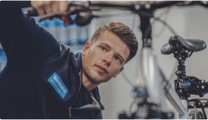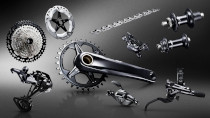Craig Alexander is a 5x Triathlon World Champion and 12x Australian Champion. He is a husband to Neri and a dad to Lucy, Austin, and Lani. Craig is an ambassador for the Kids Foundation and The Safeheart Foundation and also founded an online endurance training platform, Sansego
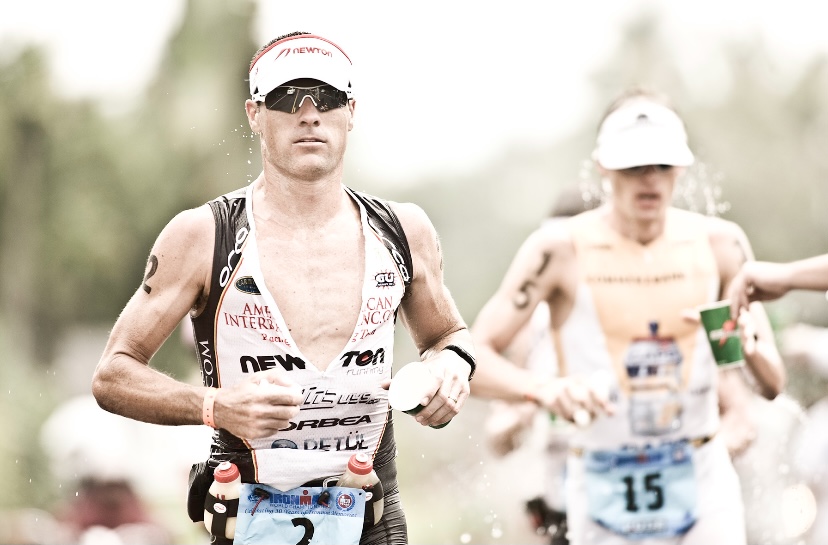
Triathlon running - or running off the bike - is infamous for the feeling of “dead” or abnormally heavy legs. Every triathlete has experienced it at some point, as well as the frustration of not being able to run at your normal level. Running off the bike feels different from running "fresh" because you're already fatigued from swimming and biking and trying to transition quickly between two disciplines. This creates an awkward, uncoordinated sensation experienced by triathletes of all levels.
But why exactly is it so challenging to run well after a hard bike ride? Cycling workloads require that our blood flow be directed to deliver oxygen to the muscles that are working the hardest. When we stop cycling and immediately begin to run, different muscle groups become the prime movers. So, our body must quickly shunt or redirect blood (and oxygen) to these new muscle groups and rapidly modify its muscle firing patterns to accommodate this shift in functional movement.
There is also a change in our blood pressure when we dismount our bikes at T2 and transition to running, which is the first weight-bearing activity of the race. This contributes to a sensation or feeling of discomfort as our heart rate spikes temporarily before settling.
The good news is that, like many skills, running off the bike improves rapidly with specific practice. Here are some simple and specific tips that have been developed through experience and trial and error that will help you become a more effective and efficient triathlon runner.
Strong is Fast
Effective triathlon running requires a good foundation of endurance and strength to maintain form and pace under load. Being strong and fit on the bike helps but is only a start. Introducing targeted and specific strength training into a program usually produces the fastest and most significant improvements in run speed off the bike and the ability to hold pace.
The first thing I do is incorporate run-specific strength training into my weekly routine. I typically perform hill repeats once per week and often incorporate hills into my lower intensity, aerobic runs. For my hill reps, the length and gradient of the hill may change depending on the time of season, my periodization/progression, or what hills are available locally. Typically, this session would include something like a 10-15min jog warm-up followed by 8 x 2-3min repeats up a gradient, with an easy jog down recovery. The key is to hold form and pace, so don’t start too quickly.
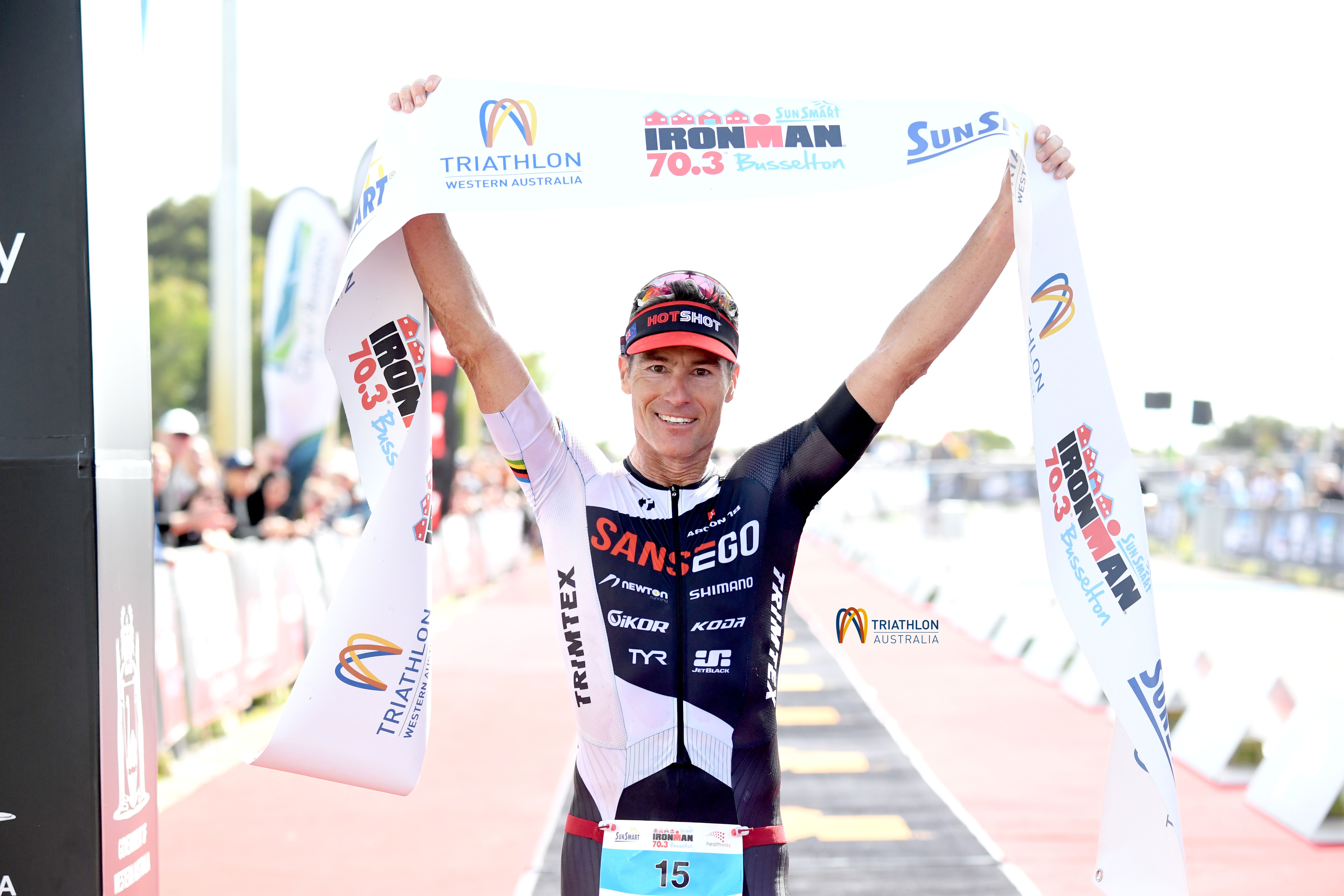
The other thing I do to build strength is hit the gym and perform a targeted strength and conditioning routine (refer to my earlier article on Strength and Conditioning for a comprehensive explanation of this, a quite detailed topic). Many exercises in the weight room promote strength gains for running in general. But for those of us seeking faster and stronger runs off the bike, many of the key exercises will target our core and legs.
My gym sessions included exercises such as front and back squats, inclined leg press, lunges, box jumps, dead-lifts, power-cleans, and hamstring curls, to name a few. I lifted quite heavy and usually structured the workout with three sets and 8-10 repetitions. Proper technique is absolutely crucial when lifting weights and performing strengthening exercises in the gym to get maximum strength gains in the targeted areas and also for injury prevention. Be sure to work with a strength and conditions coach to ensure you perform these lifts properly.
Core Strength, Stability, Activation Exercises
Those who know me will know I am a huge advocate of including core strength and stability exercises as part of a weekly training plan. Core strengthening and activation refers to the strengthening and “turning on” of the smaller, stability muscles that attach to our pelvis and provide the foundation for effective and efficient movement - something that is important to every athlete, regardless of experience or level. This is also particularly relevant for running fast off the bike.
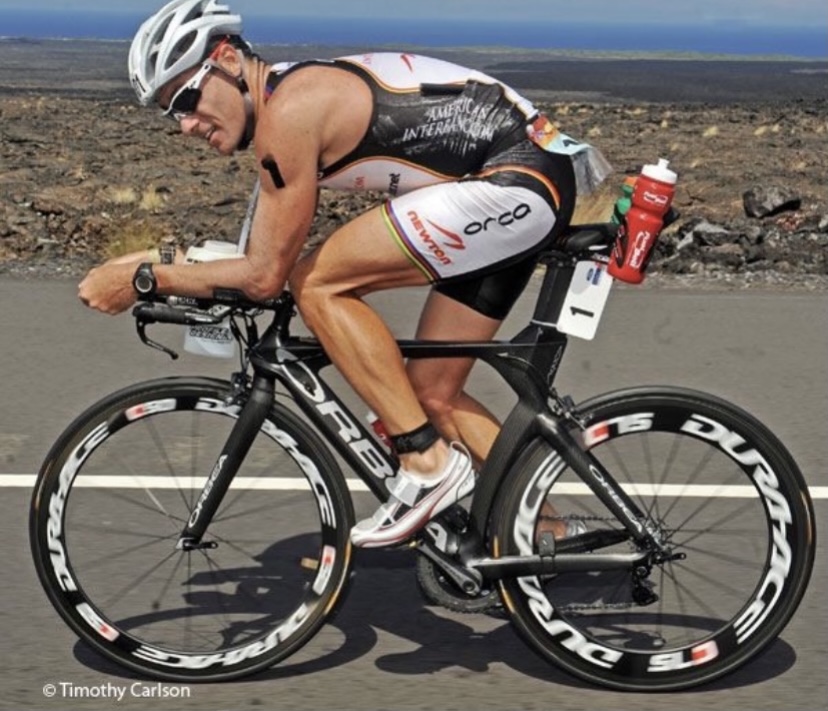
When we ride a bike, especially in the aero or TT position, we place our body in a position that forces our posterior chain muscles into a lengthened and weakened position. This causes a lot of stress on our lower back while also closing off our hip angle and leading to shorter, tighter hip flexors. This is counter-productive to efficient, fast running where we need activated glutes, strong hip flexors, and the ability to access a high range of hip extension immediately after dismounting our bikes.
I do core strength and stability exercises year-round. Depending on where my body is at, my routine is usually around 30 minutes, and I do it 3-5 times per week. There are literally thousands of effective core exercises. My routine usually includes Swiss Ball stability work, single-leg strength/balance exercises in all planes (often with a step), band resistance work, and more. Often these exercises start as static holds but then progress to alternating and more dynamic movements and combined exercises and movements. Different variations of leg lunges sometimes feature in this routine as well.
Brick or Transition Sessions
Specific training is very important in sports. Triathlon is no different, and if we want to improve a unique skill like running off the bike, it makes sense that practicing this skill will help. Brick sessions - often referred to as transition sessions, race simulations, or ROB’s - should be a staple of your training. Doing these sessions at the right time and in the right way will be one of the best things you can do to quickly improve your ability to run off the bike.
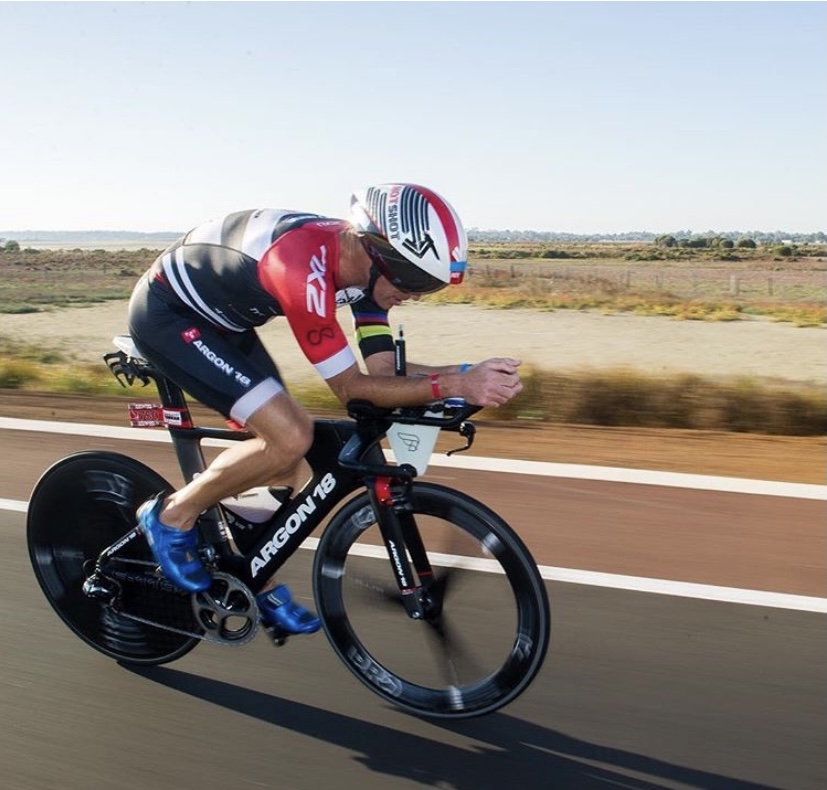
There are many styles of Brick sessions, but I like to keep things simple. My two favourite brick workouts are:
a) Endurance Brick During pre-season or the early stages of a targeted race training plan, I’ll do a session comprised of a longer ride (anywhere between 90min to six hours), immediately followed by a 20-40min run, all done at a lower intensity. I usually do these Endurance Bricks once or twice a week. The purpose is to build aerobic strength and endurance and familiarize your muscles (and mind) with the sensations caused by the transition from cycling to running.
b) Race Simulation Brick As fitness builds and races approach, I introduce Race Simulations into my training program. These sessions begin with a ride (anywhere from 90min to four hours, depending on what races I'm focused on). After a decent warm-up period, a large proportion of the ride is broken up into intervals at targeted race pace/effort level. Then I transition straight into a run off the bike, usually 3-10km (again, the actual distance will depend on what race I am specifically prepping for). This run session can be done whole or broken up into longer, sustained segments or intervals, which is a good idea if your upcoming event is longer. The goal is again to “hit and hold” your goal race pace/effort level.
These Race Simulation brick sessions are challenging but fall within your limits. They combine duration and intensity, like your upcoming race, so they may require more recovery and perhaps a little "mini-taper" in the preceding day or two. It is worth considering your training plan and session scheduling when incorporating these bricks. I usually only perform one of these Race Simulations per week and most often only in the last 4-6 weeks of my build-up.
Bike Pacing
A good triathlon performance requires solid, consistent efforts in all three disciplines. Therefore, your best run off the bike always starts with an intelligent ride. In training, get to know your cycling “sweet spot” for power, heart rate, or Rate of Perceived Exertion (RPE). Use this to help create a pacing plan for your race and stick to it, avoiding top-end efforts that put you in the red zone (something I think we have all done in the heat of battle under the pressure of racing).
Sometimes it is hard to avoid the temptation of over-biking, especially when you feel good and your competitors start pulling away. But remember, it’s a triathlon and not a bike race. My best runs off the bike came when I was very fit and paced myself well.
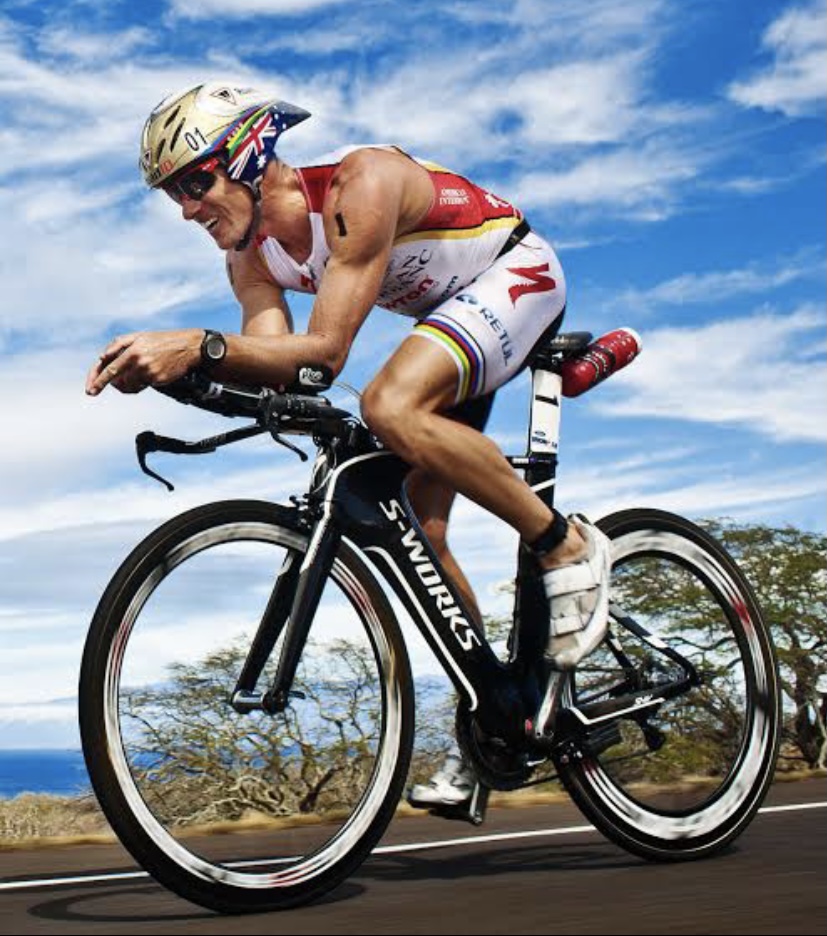
Nutrition
Nutrition is often referred to as triathlon's fourth discipline. It is a huge topic, with limitless information and opinions out there. For this article, I am just going to talk about its importance within the context of running well off the bike. Even with great fitness, strength, endurance, and specific bike-to-run physiological adaptations, if you mismanage your hydration and fuelling strategy, the back end of your race, including your run, is doomed.
Nutritional requirements for endurance sports are very personalized. So, my advice would be to do a sweat test to find out your own specific numbers with regards to hourly carbohydrate burn rate, fluid loss, and electrolyte depletion per hour. Sweat tests are now affordable and readily available.
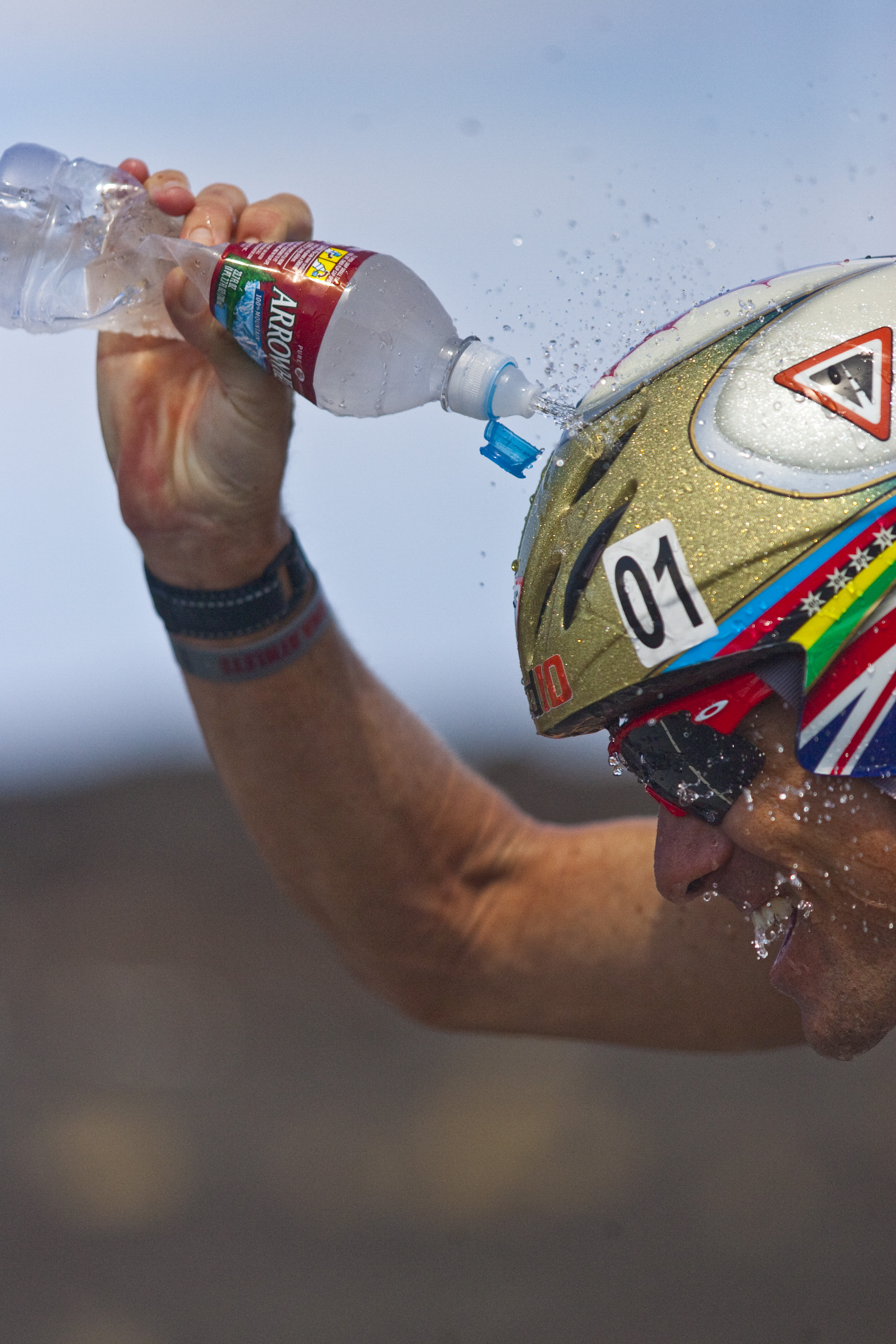
The "old school" method I used was simply to practice and refine my nutrition strategy in my Race Simulation Brick Sessions. As mentioned, this is the training session that most closely replicates the race in terms of combining duration and intensity, so it is the perfect place to refine your race-day nutrition.
Whenever possible, I tried to source and train with whatever nutritional products would be offered on course. I also had a "nutrition plan" for each race, which would vary depending on my fitness level, climate, or the event duration. With experience, I also learned just how important it was to listen to my body, so I was always prepared to work a little flexibility into my nutrition plan based on how I felt and responded during the race.
Running off the bike is different from "normal" running and can be extremely challenging both physically and mentally. But learning to combat the awkwardness and discomfort of running off the bike with strength training, regular practice, good pacing, and sound nutrition on the bike, I'm confident you will become a faster and more efficient triathlon runner.
Until next time, Craig.



